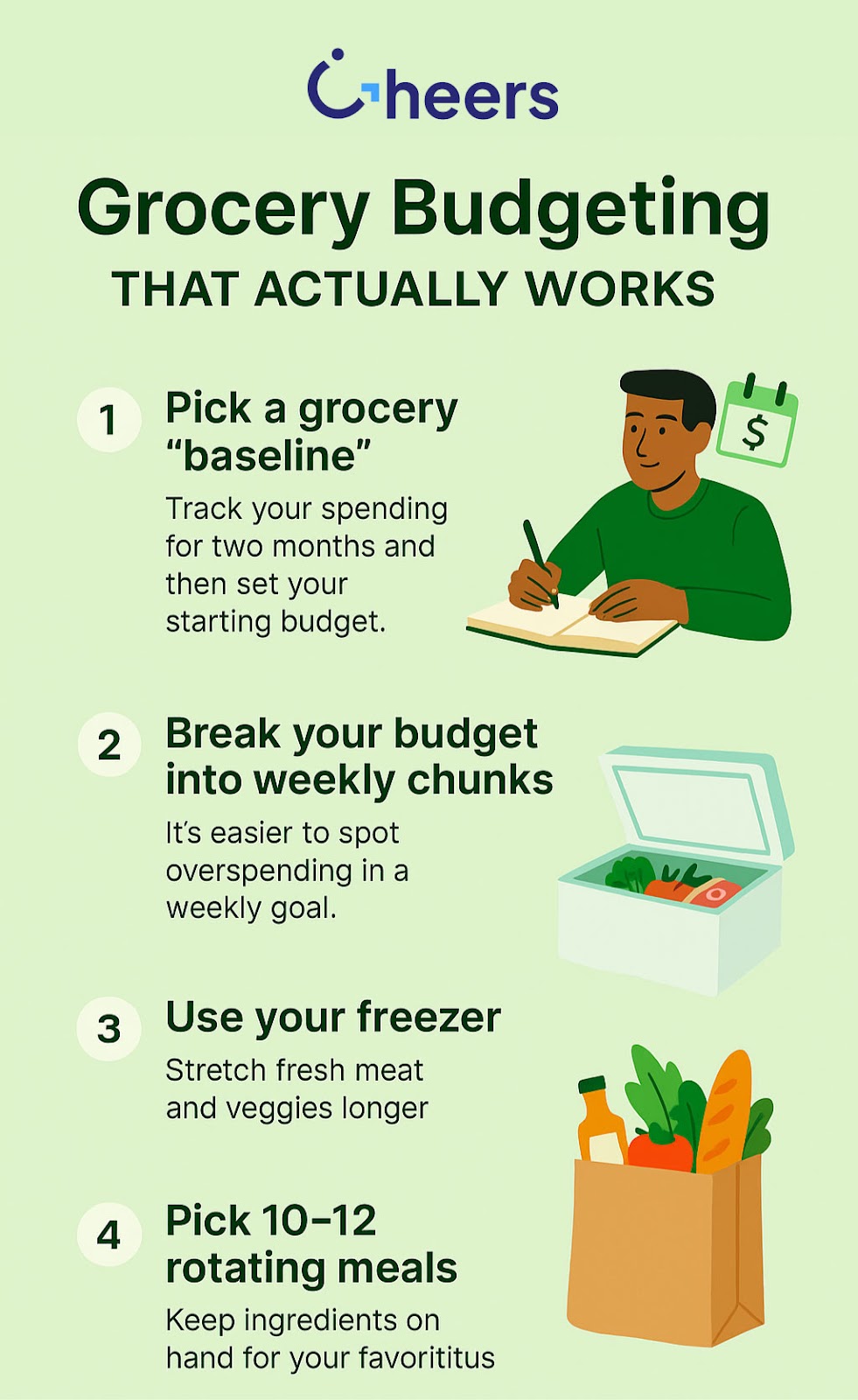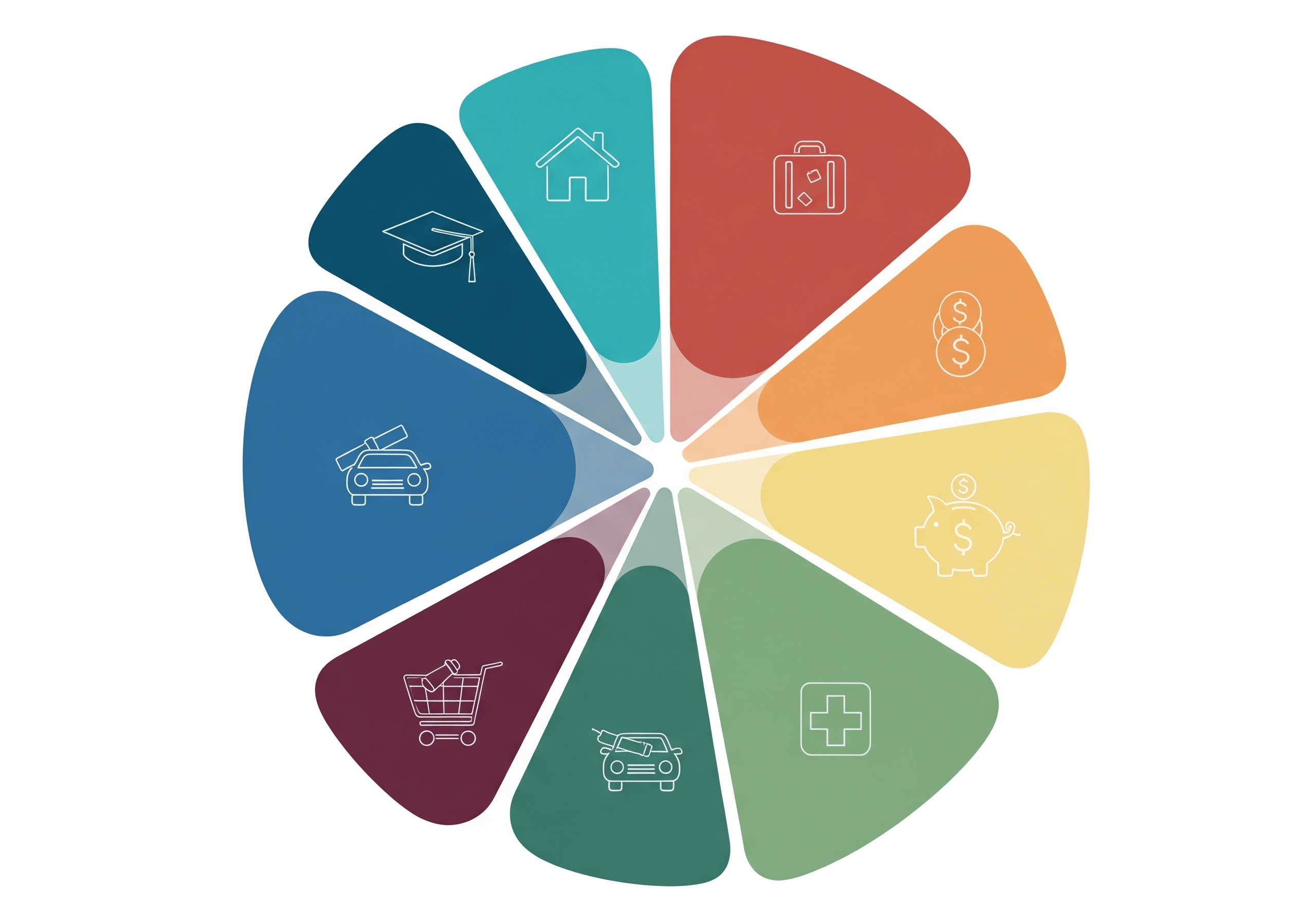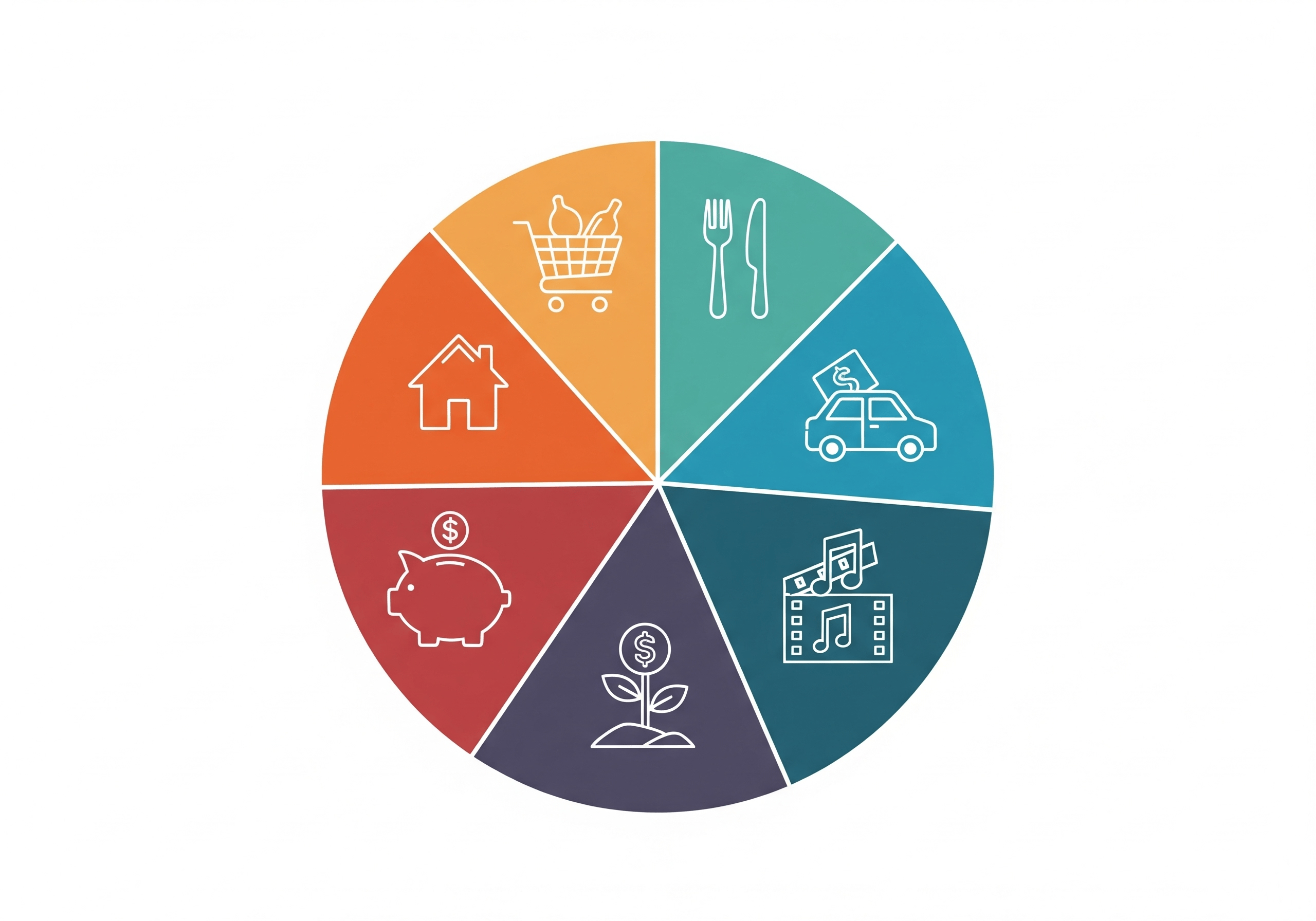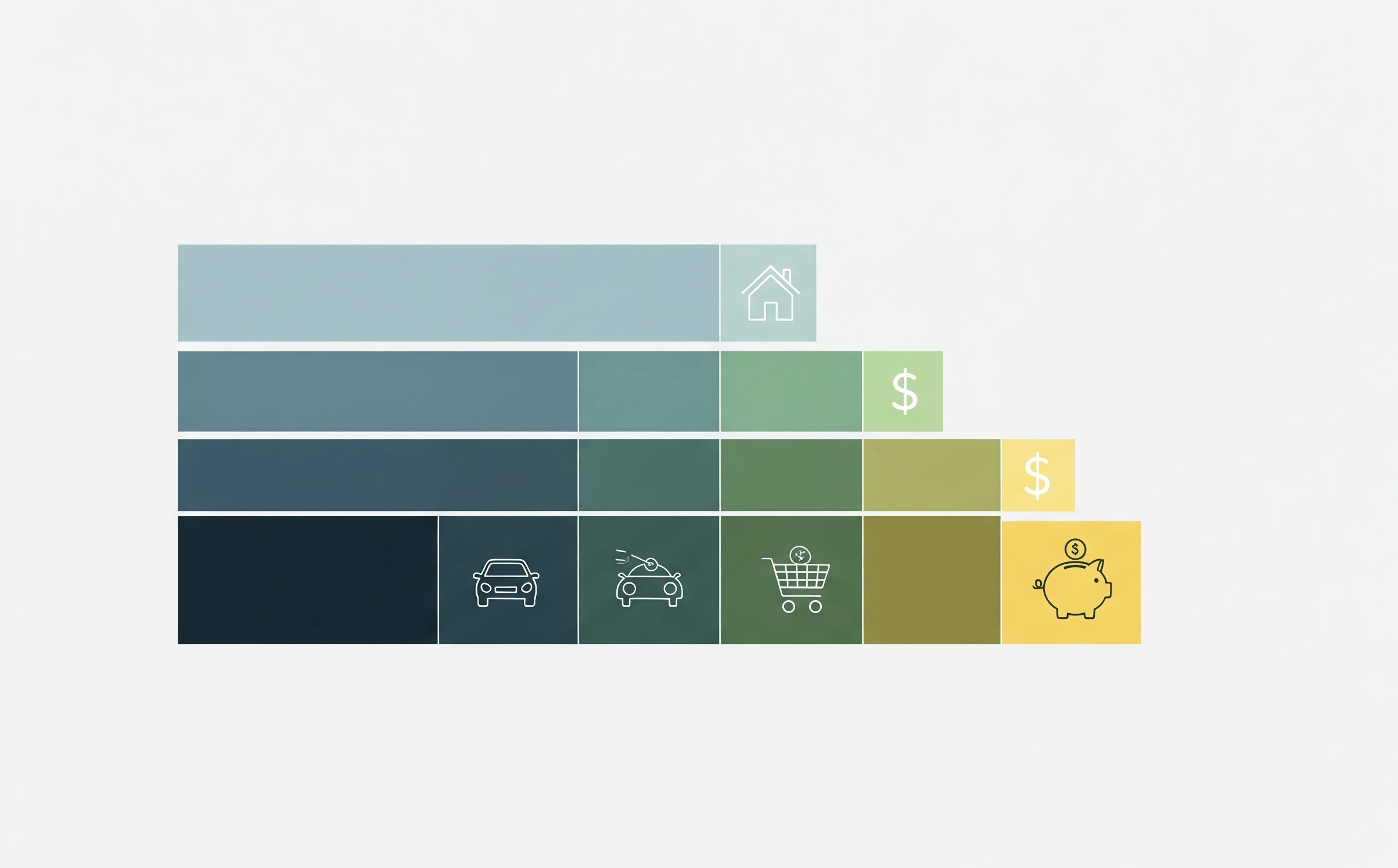When considering a grocery budget for two, the fluctuating prices and individual needs often fail to align with expectations. With inflation and the need to accommodate your partner, the question of overspending may seem like a consistent issue. This guide examines the actual costs of groceries for most two-person households in 2025, the habits that quietly increase expenses, and how lifestyle, location, and diet all contribute to your monthly total. It also outlines a practical way to set a grocery budget that fits your routine, not someone else's ideal. It demonstrates how gaining control over food spending can be tied to larger financial goals, such as building credit. You'll walk away with a clear sense of how much is reasonable to spend, what small changes lead to better results, and how Cheers Credit Builder can help you stay financially consistent as you improve your credit health.
What Most Couples Spend on Groceries Right Now
According to online sources, such as budgeting communities on Reddit, the typical suggested grocery budget for two people typically falls between $550 and $750 per month. That includes pantry staples, fresh produce, protein, snacks, and a few indulgences.
Here's what's driving those totals higher:
- Inflation on fresh goods like eggs, meat, and dairy
- Lifestyle changes, such as working from home more often
- Smaller bulk discounts compared to larger households
- Overlapping shopping trips that duplicate ingredients or impulse buys
A good benchmark? Around $125-$175 per person per week, with room to adjust up or down depending on your habits.
Where Grocery Budgets Go Off Track
Even the best meal planning can get derailed if your budget doesn't align with your actual spending behaviors. For most couples, overspending sneaks in through:
- Eating out "instead" of cooking, but still buying full groceries
- Letting food go bad because of changing plans or poor storage
- Falling into brand loyalty traps instead of buying what's on sale
- Not tracking what's already in your fridge
There's also the risk of relying on outdated budget numbers. Considering recent inflation, an old budget may see an increase of around 10-15% to today's value. Which, unfortunately, doesn't leave room for fresh foods and other now "luxuries".
Lifestyle-Based Grocery Budgeting
A one-size-fits-all number won't work for most two-person households. You're better off aligning your budget with your food preferences and lifestyle:
- Budget-Conscious Meal Preppers: $450-$550/month
- Health-Focused, Whole Food Eaters: $600-$750/month
- Foodies Who Cook Often with Specialty Items: $700-$850/month
- Mostly Organic or Dietary-Specific (Gluten-Free, Keto): $800-$1,000/month
If you're shopping for two but cooking for more (e.g., hosting family or meal prepping for lunch), adjust upward accordingly. And if you live in a high-cost-of-living area like San Francisco or New York, expect to push toward the upper end.
Grocery Budgeting That Works
The trick isn't cutting your budget-it's making your spending more predictable. That starts with these habits:
- Pick a grocery "baseline": Track your spending for two months without changing anything. Then average it and set your starting budget.
- Break your budget into weekly chunks: It's easier to spot overspending in a $150 weekly goal than a $600 monthly one.
- Use your freezer to extend the freshness of fresh meat and vegetables, especially if you shop at warehouse stores.
- Pick 10-12 rotating meals you both love and keep ingredients on hand for them. That's your safety net for busy weeks.
Couples who shop together and plan together often stay on budget more easily. But even if you divide and conquer the food runs, sync up weekly to review what worked and what didn't.

How This Ties Into Your Bigger Financial Plan
Controlling your grocery budget might seem like a small win, but it's often the first step toward larger financial stability. When you know exactly where your money is going, you're less likely to rely on credit cards to cover shortfalls, more likely to save consistently, and better prepared to set long-term financial goals. It fosters a habit of financial awareness that naturally spills over into other areas of your budget. That's where Cheers Credit Builder comes in. While you're managing grocery costs and making intentional spending choices, Cheers helps you build credit automatically through consistent, reported payments. There's no hard credit check and no surprise fees-just a fixed APR and a simple structure that supports your financial progress from the ground up.
What to Do Right Now
Start by reviewing your grocery spending from the last few months and compare what you spent with what you thought you were paying. That's your accurate baseline. From there, round up slightly to give yourself flexibility, and test that number for the next month as your new grocery budget. Track it weekly-not just at the end of the month-and look for patterns, not perfection. If you're regularly going over, determine whether it's due to lifestyle habits, food waste, or poor planning. And if you're serious about taking control of your finances as a whole, start building credit while you make your grocery routine. Cheers Credit Builder can help you do both at the same time-automatically.





.png)










